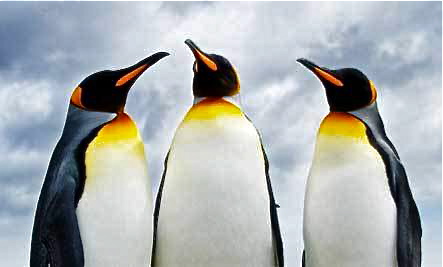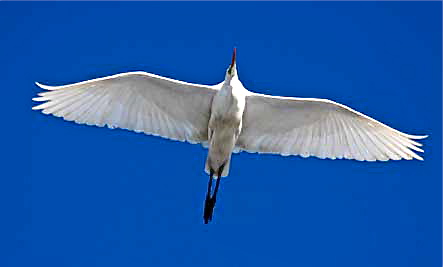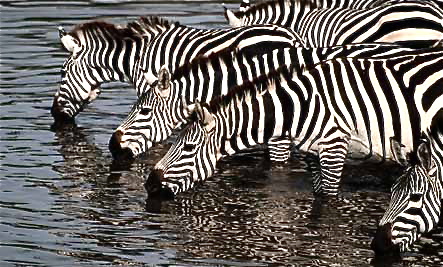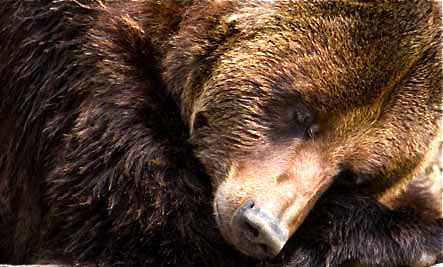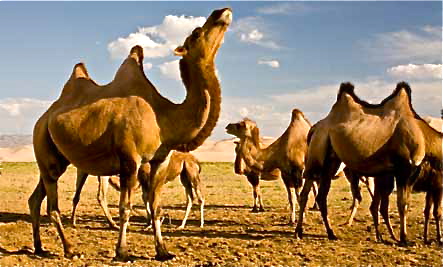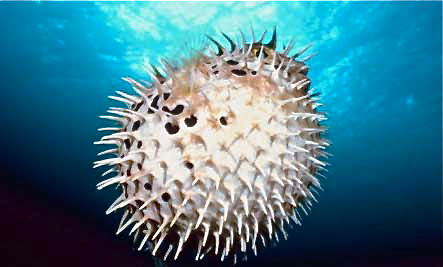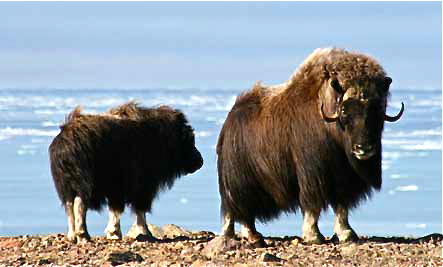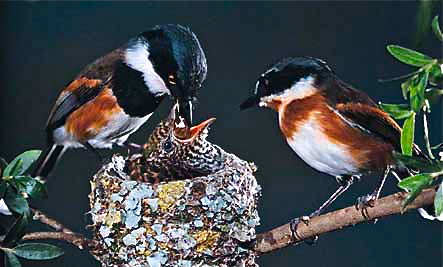Living Together
One of the wonderful adaptations in the animal kingdom is the habit of living together in communal or family groups. Animals can derive a lot of benefit from spending time with other members of the same species. They can help each other find food, defend against predators and care for young.
Countless species engage in group living, either in herds, colonies, harems, complex societies or loose associations. But perhaps the simplest and most common form of group living in the natural world is that of nuclear families, which may consist of a male/female couple with their young, a single male and various females and young, a group of females and their young, or whatever combination works best.
Flight
Animals have evolved a number of ways of navigating the Earth, including walking, swimming, climbing and hopping. But the evolution of flight takes manoeuvering on this planet to a higher level.
Flying not only delivers an animal from one place to another much faster than lumbering along with a pair of legs, it also allows creatures to escape predation, explore new territories and look for resources that might otherwise be out of reach. And although we rely on machines rather than our own anatomical abilities in the air, being able to fly has certainly transformed human society.
Migration
One of the greatest adaptations in the animal kingdom is migration and it is characteristic of a variety of different species. Nothing in nature is more awe-inspiring than the movement of a population of animals along the horizon as they migrate from one place to another.
The reasons for migration are varied, but they usually have to do with finding food and a good place to mate. Some animals cover large parts of the globe with their migration routes. For example, the arctic tern makes an annual migration from its breeding grounds in the Arctic to its wintering grounds in Antarctica, covering a distance of 40,000 kilometres.
Camouflage
The ability to blend into the surrounding environment can come in handy when trying to avoid a predator, especially for those animals with little else in their defense arsenal.
Several animal species, including scorpionfish and leaf frogs, can change their appearance to match their surroundings. Others can make themselves appear to be something boring, like the walking stick, which looks very much like a twig. Zebras are another animal that uses camouflage to fool would-be predators; to a lion, a herd of zebras may look more like a mass of black-and-white strips than a delicious prey species.
Hibernation
Having to get out of bed on cold winter days can be unpleasant enough to make hibernation seem like a pretty smart idea. After all, it is a great way to escape the cold and an ingenious method of surviving in harsh conditions or when resources are scarce.
A lot of animals hibernate, including chipmunks, hedgehogs, bats and bears. Some animals, such as the America black bear, snooze through winter but can be aroused from their slumber somewhat easily. Others, such as most small mammals, enter a deeper state of suspended animation. It is usually quite difficult to stir these animals during hibernation.
Resource Conservation
For animals that live in areas where resources such as food and water are scarce for long periods of time, the ability to conserve fat and water in the body can mean the difference between life and death.
A stunning example of resource conservation comes from the Bactrian camel, a two-humped ungulate that lives in the rocky and arid regions of Central and Eastern Asia, where temperatures range from -29°C in winter to 37.7°C in summer.
Bactrian camels have a couple of key adaptations that help them to survive these harsh conditions. First, their humps are filled with fat, which can be converted into energy and water in lean times. Second, they can forgo sweating until their body temperatures reach nearly 40°C.
Artificial Bigness
A lot of species in the animal kingdom try to appear larger in order to ward off predation, but the blowfish, also called a puffer or balloonfish has the ability to puff up to about twice its normal size in response to a predator’s advance.
When threatened, blowfish pump air or water into their extremely elastic stomachs to the point of being nearly spherical in shape with their spines and scales protruding. At that point they can barely move, but it does not usually matter since they are virtually inedible in that form.
Hair
For most people, hair is a decorative yet essentially unnecessary feature of their anatomy. But to most mammals in the wild, hair offers important protection from the elements.
The musk ox is a superb example. It has an important adaptation to its bitterly cold home on the vast Alaskan tundra: Its thick, shaggy hair hangs down to the ground and gives the ox the protection it needs to endure frigid temperatures. Such fur helps the animal survive as winter temperatures drop to an average of -34.4°C. Some of the hair is shed in time for summer, allowing the musk ox to cool down as temperatures reach 4-10°C.
Nest Parasitism
Some females relish the joy of motherhood, while others would just as soon let somebody else do the work for them. For example, certain cuckoo birds are famous for their habit of nest parasitism, which refers to laying their eggs in the nests of other species, who then feed and care for the cuckoos’ orphaned offspring.
As is the case with most nest interlopers, the young cuckoos are larger and more aggressive than the hatchlings of the host nest. In the stiff competition for food, the weaker nest-mates usually die.
Sometimes, the young cuckoos will push other eggs or chicks out of the nest, thereby eliminating the competition in the first place. It is an excellent adaptation for the cuckoo, but a disastrous one for the nest-owner.
Excerpted from Animal Planet

